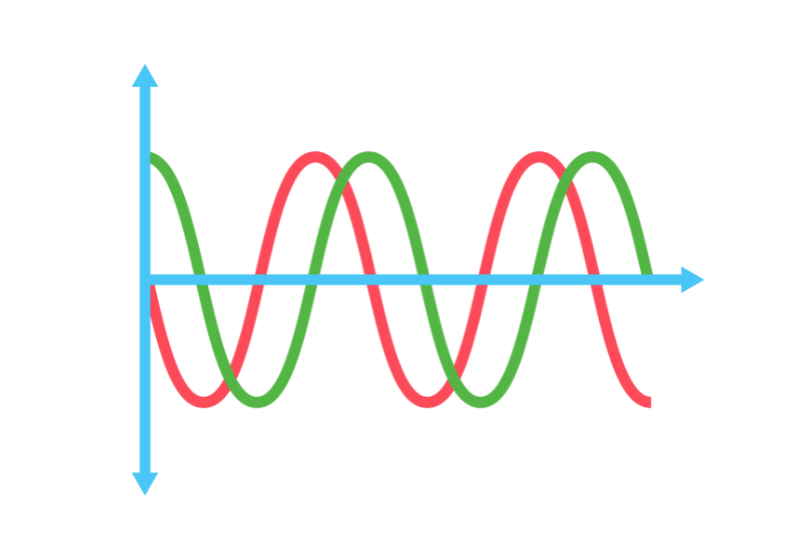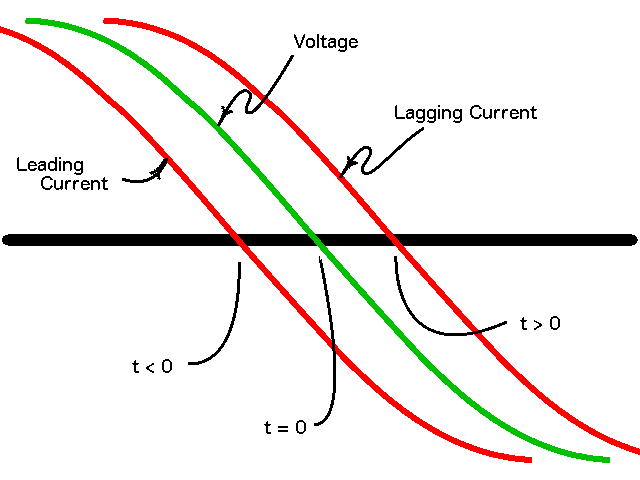What is a leading or lagging circuit?
In electrical circuits, the concepts of leading or lagging of current are fundamental to understanding the behavior of circuits, especially those involving alternating current (AC).

In an AC circuit, the voltage and current waveforms are sinusoidal and can shift in phase relative to each other. When we say that the voltage is “leading” or “lagging”, we’re referring to the phase relationship between the voltage and current waveforms. If the voltage waveform reaches its peak before the current waveform, we say that the current is lagging. Conversely, if the current waveform peaks before the voltage, we say that the current is leading.
Lead and Lag Circuits
In an AC circuit, the voltage and current waveforms are sinusoidal and can shift in phase relative to each other. This phase shift is described as either leading or lagging.
By CC BY-SA 4.0, Link
In the above image, the voltage and current are both sinusoidal functions with the same frequency.
- Lead Circuit: In a lead circuit, the current waveform reaches its peak before the voltage waveform. This is typically observed in circuits that have more capacitive reactance than inductive reactance.
- Lag Circuit: Conversely, in a lag circuit, the current waveform peaks after the voltage waveform. This is common in circuits with more inductive reactance than capacitive reactance.
Understanding Reactance
The leading or lagging relationship between voltage and current is primarily determined by the type of components in the circuit. In a purely resistive circuit, voltage and current are in phase with each other. However, in circuits containing reactive elements like inductors and capacitors, the voltage and current can be out of phase.
Reactance is a measure of how a circuit component resists or oppose the change in current (or voltage) over time. There are two types of reactance: inductive and capacitive.
- Inductive Reactance: Inductive reactance occurs in circuits containing inductors. Inductors resist changes in current, causing the current to lag behind the voltage.
- Capacitive Reactance: Capacitive reactance is present in circuits containing capacitors. Capacitors resist changes in voltage, which leads to the current peaking before the voltage.
The concepts of voltage and current leading or lagging, the phase relationship between them and the understanding of reactance, are fundamental to the study and application of electrical engineering. It plays a key role in power systems, where the phase difference between voltage and current can significantly impact the power factor and efficiency of the system. It’s also important in the design and analysis of AC circuits, including filters, oscillators, and communication systems.
